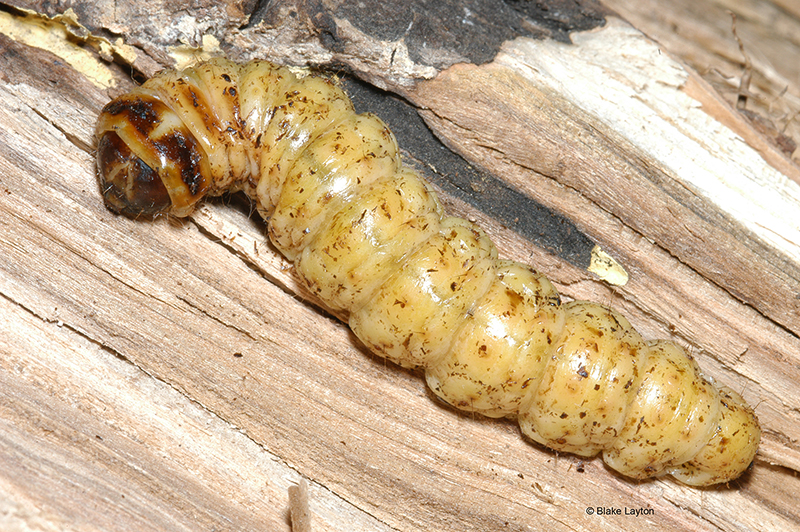Carpenterworm | Vol. 3, No. 30

Prionoxystus robiniae
Order: Lepidoptera
Family: Cossidae
“I was sawing up a red oak tree that the wind blew down in our yard, and I found this big caterpillar tunneling inside the log!”
We usually think of caterpillars as pests that eat leaves, but this caterpillar eats wood. Most of the insects you might find boring inside a green log or piece of recently cut firewood are beetles, but there are a few wood-boring caterpillars. Carpenterworm moths lay their eggs on the bark of hardwood trees such as oaks, ash, sycamore, sugarberry and black locust. The caterpillars chew through the bark immediately upon hatching and begin feeding in the sapwood, creating progressively larger galleries as they grow, and ultimately tunneling into the heartwood. As they grow they keep enlarging the entrance so they will be able to escape once they are mature, at which time they will be two to three inches long and about ½ inch in diameter. Here in the South, caterpillars reach maturity in one to two years, but development times are longer farther north.
The moths are mottled gray and black in color, about two inches long, and are well-camoflaged when resting on tree bark. They look a bit like sphinx moths, but belong to a different family. Female moths are so heavily laden with eggs that they are usually unable to fly very far from their host tree before laying eggs.
Damage and Control: Although carpenterworms attack living trees and chew large galleries in tree trunks, they do not usually kill trees. Smaller insects that feed on the cambium, or that spread tree-killing diseases, are more serious threats. However, the galleries of carpenterworms cause significant reductions in the value of affected hardwood logs. Although preventive insecticide treatments are available, these are not really practical for commercial timber or home landscapes. Is it really worth the time, cost and effort required to treat a tree’s trunk several times a year for decades in order to prevent infestation by a pest that is not likely to kill the tree? Preventive treatment or remedial treatments, which usually involve injecting insecticides or parasitic nematodes into gallery openings, may make sense for high value trees.
Blake Layton, Extension Entomology Specialist, Mississippi State University Extension Service.
The information given here is for educational purposes only. Always read and follow current label directions. Specific commercial products are mentioned as examples only and reference to specific products or trade names is made with the understanding that no discrimination is intended to other products that may also be suitable and appropriately labeled.
Sign up to receive Bug's Eye View.

